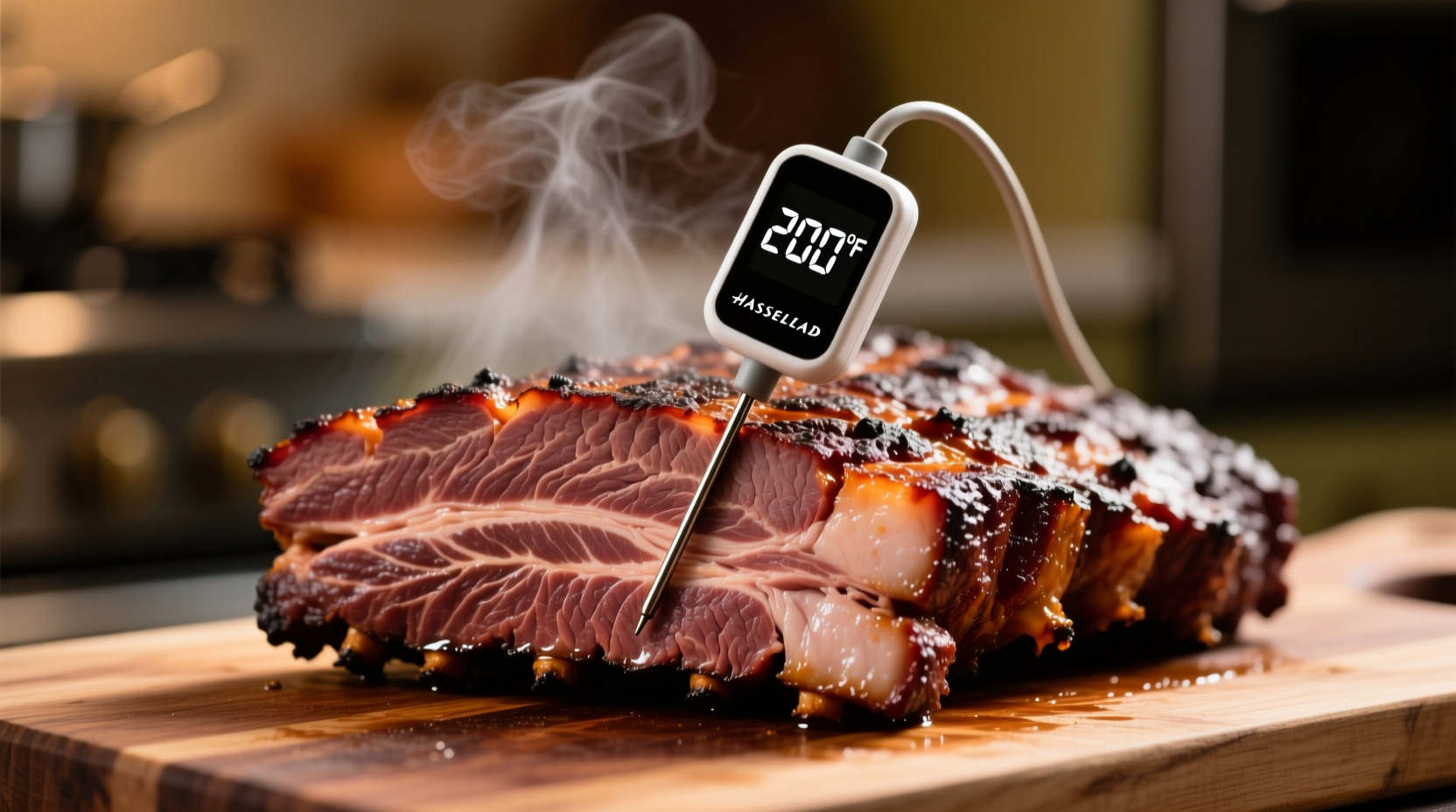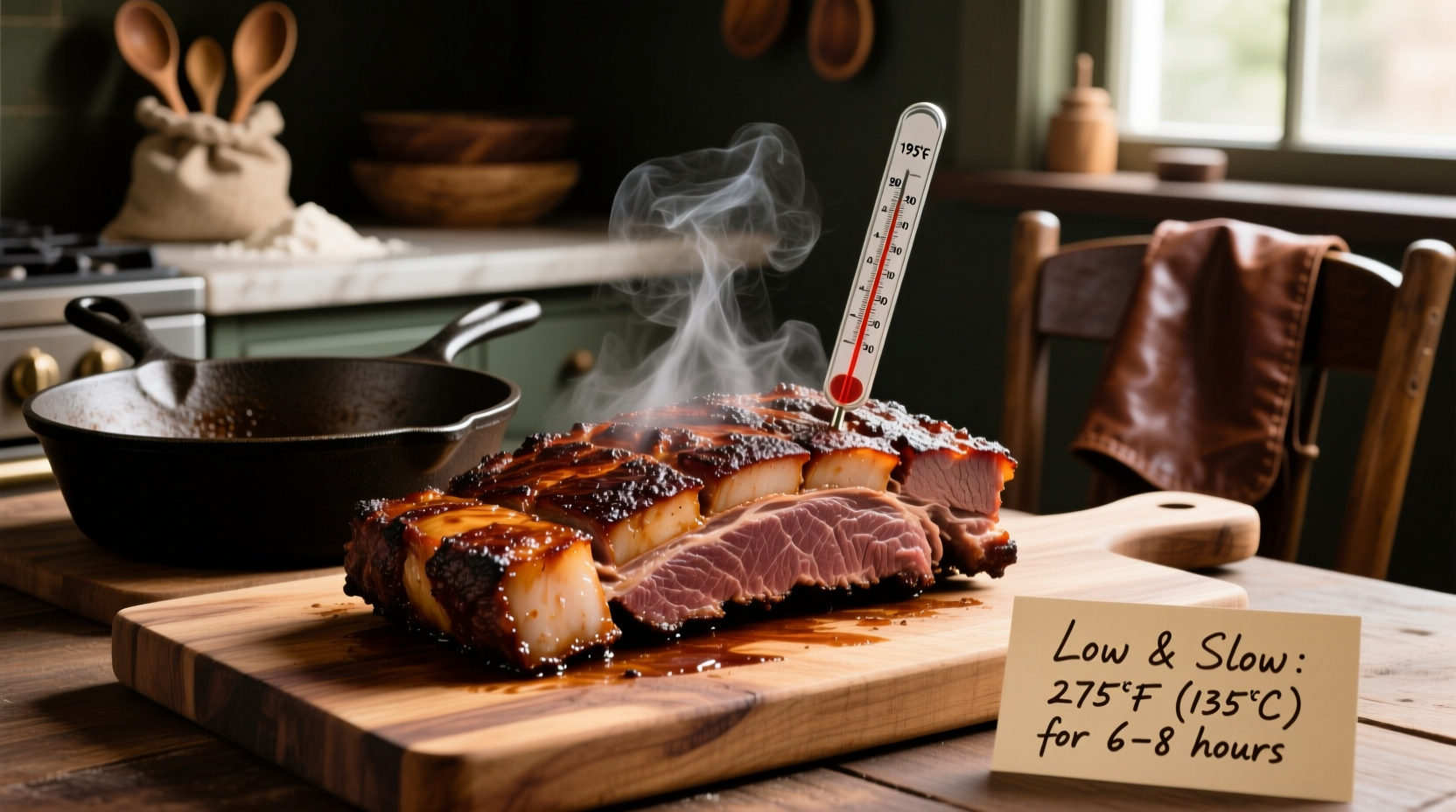The ideal cooking temperature for brisket is 225-250°F (107-121°C) with an internal temperature target of 195-205°F (90-96°C). This low-and-slow approach transforms tough connective tissue into tender, flavorful meat while maintaining proper food safety standards.
Mastering brisket temperature is the difference between dry, chewy meat and melt-in-your-mouth perfection. Whether you're using a smoker, oven, or pellet grill, understanding both cooking and internal temperature targets ensures restaurant-quality results every time. This guide delivers precise temperature ranges backed by meat science, plus practical adjustments for different cooking scenarios.
Why Temperature Matters for Brisket Success
Brisket comes from the chest muscle of the cow, containing abundant collagen and connective tissue. Cooking at the right temperature slowly converts collagen to gelatin while rendering fat without drying out the meat. Too hot and you'll end up with tough, stringy results; too cool and the connective tissues won't properly break down.
| Temperature Stage | Recommended Range | What's Happening |
|---|---|---|
| Cooking Environment | 225-250°F (107-121°C) | Optimal collagen breakdown without moisture loss |
| Internal Stall | 150-170°F (66-77°C) | Evaporative cooling causes temperature plateau |
| Target Internal Temp | 195-205°F (90-96°C) | Complete collagen conversion for perfect tenderness |
| Resting Temperature | 140-160°F (60-71°C) | Ideal range for resting before slicing |
Your Brisket Cooking Temperature Roadmap
Preparation: Setting Up for Success
Before firing up your smoker, understand that brisket requires patience. The USDA Food Safety and Inspection Service recommends cooking beef to at least 145°F (63°C) for safety, but brisket needs much higher temperatures to achieve tenderness. Season your brisket generously and let it sit at room temperature for 30-60 minutes before cooking to ensure even heat penetration.
Cooking Process: Navigating the Temperature Journey
Set your smoker or oven to 225-250°F (107-121°C) - this sweet spot balances cooking time with optimal texture development. According to research from Texas A&M's Department of Animal Science, temperatures above 275°F cause rapid moisture loss, while below 200°F extends cooking time unnecessarily.
Expect the "stall" phase between 150-170°F (66-77°C) where evaporation cools the meat surface. This natural phenomenon can last hours, but resist the urge to increase temperature. The Kansas City Barbeque Society recommends either waiting it out or using the "Texas Crutch" (wrapping in butcher paper or foil) to push through the stall.

Temperature Adjustments for Different Scenarios
Not all brisket cooking situations are identical. Consider these context boundaries when determining your ideal temperature:
- Thin vs. Thick Cuts: For point cuts (thicker), stay at the lower end of the range (225°F); for flat cuts (thinner), 250°F prevents over-drying
- Weather Conditions: In cold or windy conditions, increase temperature by 25°F to maintain consistent cooking environment
- Time Constraints: If short on time, 275°F works but requires closer monitoring to prevent dryness
- Wood Choice: Stronger woods like hickory allow slightly lower temperatures (225°F) while milder woods work better at 250°F
Doneness Testing: Beyond the Thermometer
While 195-205°F (90-96°C) is the target internal temperature, doneness testing provides additional verification. Insert a probe thermometer - it should slide in with almost no resistance, like butter. The "jiggle test" shows proper tenderness when the brisket wobbles uniformly. America's Test Kitchen research confirms that temperature alone doesn't guarantee perfect texture; these physical tests are essential complements.
Resting: The Critical Final Step
Never skip resting! Wrap your brisket in foil or butcher paper and place in a cooler or warm oven (150°F) for 1-2 hours. This allows juices to redistribute and residual heat to carry the internal temperature up 5-10 degrees. The Texas A&M Meat Science department emphasizes that resting at 140-160°F (60-71°C) yields juicier results than immediate slicing.
Common Temperature Mistakes to Avoid
Even experienced cooks make these temperature-related errors:
- Peeking too often: Every time you open the smoker, temperature drops 25-50°F, extending cooking time
- Relying solely on time: Brisket doneness depends on internal temperature, not clock time
- Skipping the stall: Rushing through the stall with excessive heat causes uneven texture
- Cutting too soon: Slicing before proper resting releases precious juices











 浙公网安备
33010002000092号
浙公网安备
33010002000092号 浙B2-20120091-4
浙B2-20120091-4